Description
Trichocereus Pachanoi
| Bulk Cutting Packs | San Pedro Cactus Bulk
Take 20% off with these bulk cutting packs!
A great value for grafting root stock and landscapers, this San Pedro Cactus Cutting Pack offers five cuttings for a discounted rate, perfect for grafting stock or any project that requires multiple cuttings. Create a stunning display in your garden or outdoor space with this reliable and affordable pack of Tirchocereus pachanoi cactus cuttings.
Available in regular and imperfect packs for a greater value. Regular packs will have normal small damages and imperfect packs will be cosmetically damaged but still healthy cuttings.
This cactus is considered the PC (Predominant Cultivar) variety of San Pedro Cactus in the United States. This means it’s the most common type of San Pedro Cactus cultivated for ornamental use. It is sometimes referred to as Pachanot or a San Pedro Hybrid. Regardless, there will be absolutely no refunds or cancellations allowed once your order has shipped. Understand which cultivar you are ordering before you order.
We have several non-PC San Pedro Cactus options available if you are looking for less common varieties click here.
Trichocereus pachanoi, also known as San Pedro Cactus, is one of the most famous cacti due to its rich history, spiritual significance, and stunning appearance. Revered for its ceremonial use and admired in gardens for its rapid growth and beautiful flowers, the San Pedro Cactus has gained popularity both as a traditional plant and as an ornamental addition to landscapes.
The San Pedro Cactus is a member of the Cactaceae family, which also includes the popular Chrismas cactus, prickly pear (opuntia), pincushion cactus (mammillaria), and the iconic saguaro cactus.
Trichocereus pachanoi (San Pedro Cactus)
San Pedro Cactus, Echinopsis pachanoi, Cereus pachanoi
Trichocereus pachanoi, also known as San Pedro Cactus, is one of the most famous cacti due to its rich history, spiritual significance, and stunning appearance. Revered for its ceremonial use and admired in gardens for its rapid growth and beautiful flowers, the San Pedro Cactus has gained popularity both as a traditional plant and as an ornamental addition to landscapes.
The San Pedro Cactus is a member of the Cactaceae family, which also includes the popular Chrismas cactus, prickly pear (opuntia), pincushion cactus (mammillaria), and the iconic saguaro cactus.
Description
The San Pedro Cactus is a tall, columnar cactus with a bluish-green color. It has ribbed, fleshy stems adorned with small clusters of spines along the ribs. As a fast-growing cactus, it can reach significant heights and is often branched, creating a towering, tree-like structure. The cactus is highly regarded for its medicinal and ceremonial properties, particularly for its psychoactive compounds, notably mescaline. However, it is also widely admired as an attractive ornamental plant due to its elegant structure and striking flowers.
Native Habitat
The San Pedro Cactus is native to the Andes Mountains of South America, specifically found in Peru, Ecuador, and parts of Bolivia, Argentina, and Chile. It thrives in high-altitude environments ranging from 6,600 to 9,800 feet (2,000 to 3,000 meters).
Plant Type and Habit
The San Pedro Cactus is a perennial succulent cactus. It grows in a columnar, upright habit, often developing multiple branches as it matures.
Plant Size
San Pedro Cacti can grow quite large under the right conditions. Vigorous, it can add 12 inches (30 cm) per year. It typically reaches heights of 10-20 feet (3-6 meters), though some specimens can grow taller, up to 30 feet (9 meters) in the wild. Its spread can vary, but mature cacti often have multiple branches, leading to a spread of around 3-6 feet (1-2 meters).
Flowers
The flowers of the San Pedro Cactus are one of its most remarkable features. The cactus produces large, white, fragrant flowers measuring 8-9 inches (20-23 cm) in diameter. These tubular flowers bloom at night, often remaining open into the early morning. They are produced from the spine clusters along the margins near the top of the branches.
San Pedro Cactus blooms primarily in the summer months, typically from June to July. Although the flowers are short-lived, blooming for only a day or two, they are a spectacular sight.
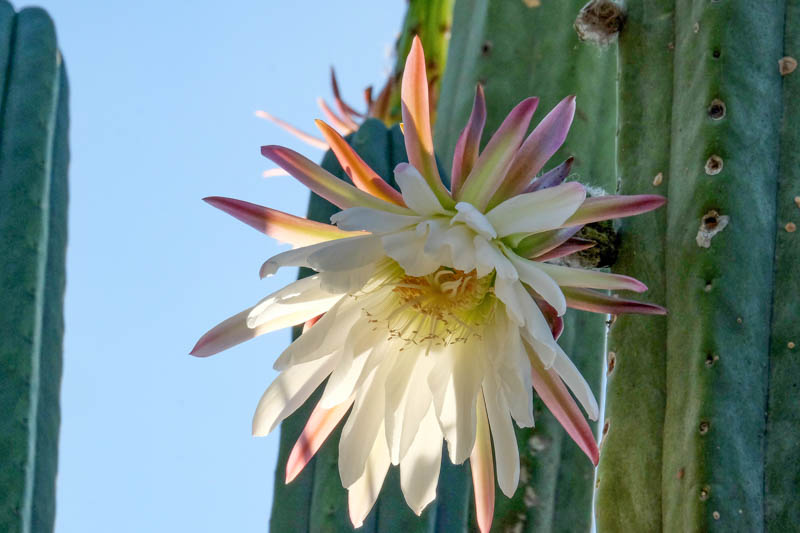
Fruits
Following the flowering period, the San Pedro Cactus produces elongated, green fruits that can reach up to 2-4 inches (5-10 cm) in length. The fruits contain numerous small black seeds and have a fleshy interior. In some regions, the fruit is consumed by animals or even harvested by humans for its edible qualities, though it is not commonly eaten.
Stems
The San Pedro Cactus has fleshy, ribbed stems, 2-6 inches (5-15 cm) in diameter, that are pale green to blue-green when young, changing to dark green with age. The stems are marked by ribs (typically 6-8 per stem), with small clusters of spines located along the ridges. These spines are usually short, ranging from 0.2 to 0.4 inches (5-10 mm) in length, and are relatively soft compared to other cacti species. The stem color can change slightly based on exposure to sunlight and environmental conditions.
Hardiness
The San Pedro Cactus is hardy in USDA zones 8b-10, meaning it can tolerate temperatures as low as 20°F (-9°C). Because it grows naturally in the Andes at high altitude and with high rainfall, it can handle colder temperatures better than most other cacti.
Uses
This desert plant has a range of uses:
Ornamental plant: The cactus is widely cultivated as an ornamental plant due to its striking appearance and fast growth. It is often used in landscaping for desert gardens, rock gardens, and succulent gardens.
Traditional medicine: In Andean cultures, San Pedro has been used for centuries in spiritual healing and traditional medicine. It is believed to have therapeutic properties that treat various ailments, from inflammation to mental health conditions.
Psychoactive uses: The cactus contains mescaline, a psychoactive compound that has been used in ceremonial and religious practices. Mescaline is known for its hallucinogenic effects and has been used in controlled, ritualistic settings for spiritual guidance and healing.
Wildlife
In its native habitat, the San Pedro Cactus is pollinated by nocturnal animals such as bats and moths, which are attracted to its large, fragrant flowers. Additionally, the cactus’s fruits provide food for various birds, insects, and mammals, helping to disperse its seeds.
Toxicity
The San Pedro Cactus contains mescaline, which is a psychoactive alkaloid. While mescaline is not considered toxic in small, controlled doses, it is classified as a controlled substance in many countries due to its hallucinogenic effects. Consumption of the cactus for recreational purposes is illegal in several regions. Ingesting it without proper guidance can lead to nausea, vomiting, hallucinations, and other adverse effects.
Deer and Rabbit Resistance
San Pedro Cactus is naturally resistant to deer and rabbits. Its spiny exterior and tough, fibrous flesh deter most herbivores from feeding on it. While smaller animals may occasionally nibble on its fruits, the cactus itself is generally left untouched by wildlife.
Drought Tolerance
Like many cacti, Trichocereus pachanoi is drought-tolerant. It stores water in its fleshy stems, allowing it to survive extended dry periods. However, it benefits from occasional watering during the growing season (spring and summer) to support its rapid growth.
Invasiveness
San Pedro Cactus is not considered invasive in most areas. It grows slowly and does not aggressively spread beyond where it is planted. However, in climates similar to its native range, it may naturalize if given favorable conditions.
Interesting Facts
- Mescaline-rich: San Pedro is one of the few plants in the world that contains mescaline, which has been used for spiritual purposes for over 3,000 years.
- Sacred plant: The cactus is considered sacred in many Andean cultures, where it is used in ceremonies to promote healing, spiritual growth, and connection with nature.
- Fast-growing cactus: Unlike many cacti, which grow slowly, San Pedro can grow up to 12 inches (30 cm) per year under the right conditions.
- Medicinal uses: Apart from its psychoactive properties, San Pedro has been used traditionally to treat fevers, infections, and arthritis.
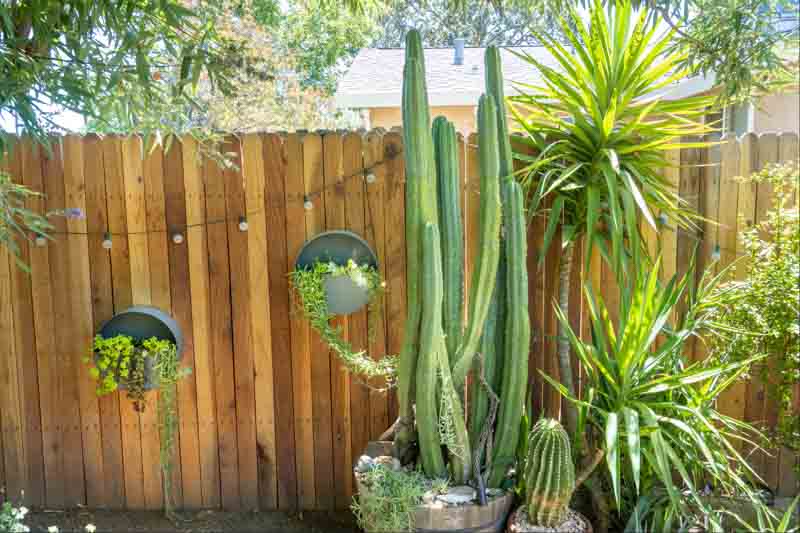
San Pedro Cactus Care
Growing and caring for the San Pedro Cactus is relatively easy, especially for gardeners in warm, dry climates. This hardy, fast-growing cactus thrives in various conditions and makes a beautiful, low-maintenance addition to any garden.
Climate and Sunlight
- Sunlight: San Pedro Cacti prefer full sun but can tolerate partial shade, especially in hot climates. Ensure the cactus receives at least 6-8 hours of sunlight per day. If growing indoors, place your San Pedro Cactus in a bright, sunny spot, such as a south-facing window, to ensure it receives enough light.
- Temperature: This cactus is hardy in USDA zones 8b-10, tolerating temperatures to 20°F (-9°C). However, protect it from frost, as prolonged freezing temperatures can damage the plant. In cooler climates, grow the cactus in a pot so it can be brought indoors during cold weather.
Soil and Drainage
- Soil: San Pedro Cactus thrives in well-draining, sandy, or rocky soil. A good cactus or succulent mix will work well, or you can make your own by combining regular potting soil with perlite, sand, or small gravel.
- Drainage: Ensure the soil drains well to prevent root rot. For potted plants, use a container with drainage holes to allow excess water to escape.
Watering
- Growing season (spring/summer): Water regularly. Make sure you let the soil dry out between waterings. No water should ever be allowed to stand around the roots. During hot weather, slightly increase the frequency of watering.
- Dormant season (fall/winter): Reduce watering during the colder months. The cactus is dormant during this time and requires minimal moisture.
- Overwatering: Be cautious not to overwater, as San Pedro Cactus is susceptible to root rot. Always let the soil dry out completely before watering again.
Fertilizing
- Fertilizer: Feed your San Pedro Cactus with a low-nitrogen cactus fertilizer or a balanced 10-10-10 fertilizer diluted to half strength.
- Frequency: Fertilize once a month during the growing season (spring and summer). Avoid fertilizing during the winter months when the cactus is dormant.
Repotting
- Repotting: Repot young San Pedro Cacti every 2-3 years and mature plants every 4-5 years or when the plant outgrows its pot.
- Process: Use a pot that is slightly larger than the current one, and ensure it has drainage holes. Handle the plant carefully to avoid injury from its spines.
Pruning
Pruning is generally not necessary unless you want to control the size or shape of the cactus. When pruning, use a sharp, clean knife and allow the cut to heal before watering.
Pests and Diseases
- Common pests: Watch for pests such as mealybugs, scale insects, and spider mites. If infestations occur, treat them with insecticidal soap or neem oil.
- Root rot: Overwatering or poor drainage can cause root rot. Prevent this by ensuring the cactus has well-draining soil and proper watering practices.
Propagation
- Cuttings: San Pedro Cactus is easily propagated from cuttings. Simply cut a healthy segment of the cactus, let it dry for a few days to callous, and plant it in well-draining soil. Water sparingly until roots form.
- Seeds: You can also propagate from seeds, but this method is slower. Plant seeds in a cactus mix, keep the soil moist, and provide plenty of light. Germination can take several weeks.

Frequently Asked Questions
Is San Pedro Cactus Legal?
The San Pedro Cactus (Trichocereus pachanoi) is legal to grow and possess in many countries for ornamental purposes. However, it contains mescaline, a psychoactive compound that is illegal in many parts of the world, including the U.S., unless used for religious or ceremonial purposes by specific groups. While growing the cactus is generally permitted, using it for its hallucinogenic effects is often prohibited.
What Religion Uses San Pedro Cactus?
The San Pedro Cactus has been used for thousands of years in Andean traditional medicine and spiritual ceremonies by indigenous peoples, such as the Quechua and the Aymara. The cactus is often used in shamanic rituals to induce visionary experiences, healing, and spiritual connection. In modern times, Neo-shamanic groups also use San Pedro in ceremonial practices.
What Makes San Pedro Special?
San Pedro is special due to its psychoactive properties, particularly the mescaline it contains, which can induce spiritual or visionary experiences. Beyond its psychoactive effects, it is cherished for its fast growth, beautiful flowers, and cultural significance in traditional medicine and spiritual rituals across the Andean region. Its dual role as a sacred plant and ornamental cactus adds to its unique status.

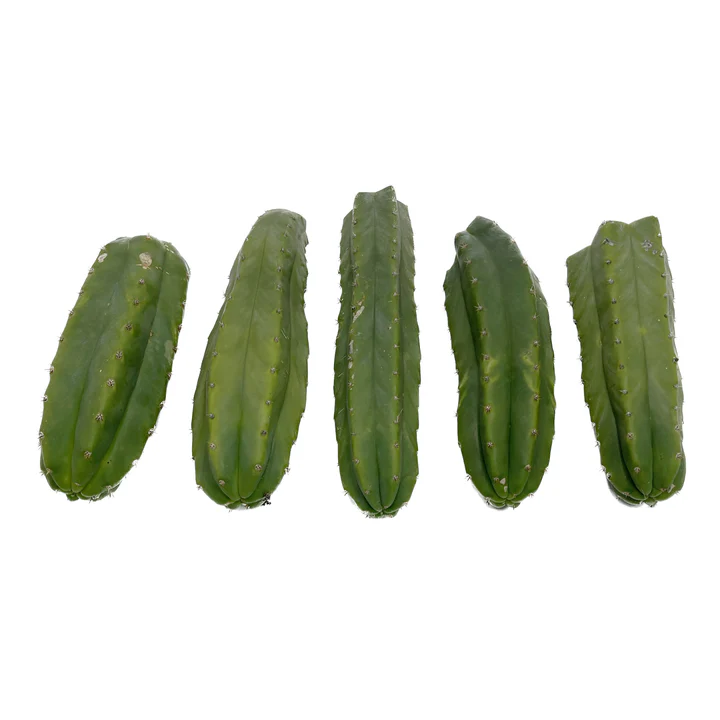
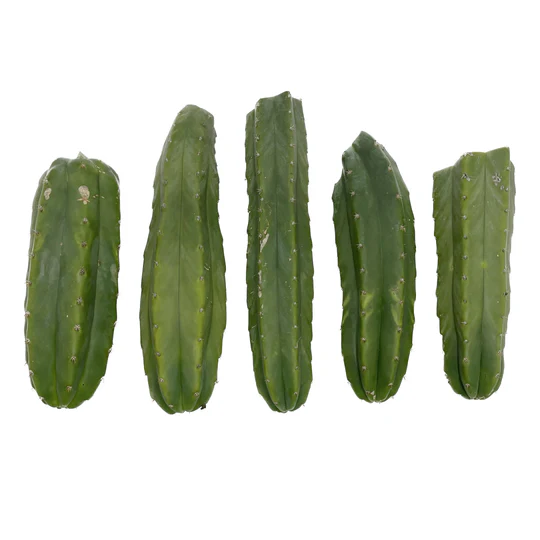
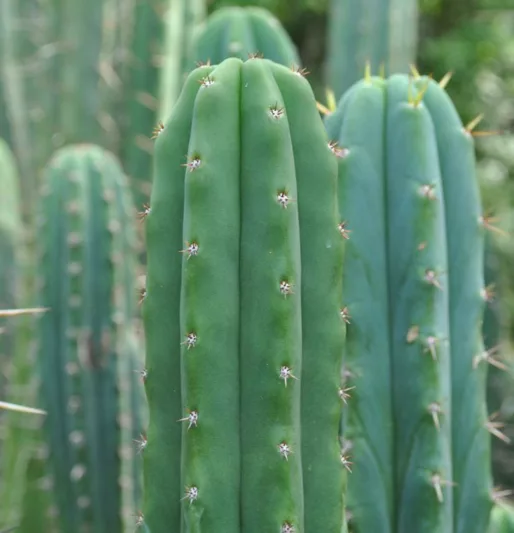

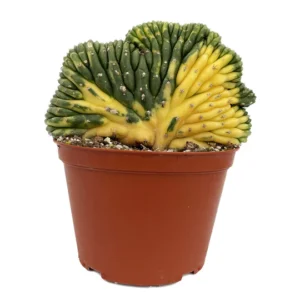

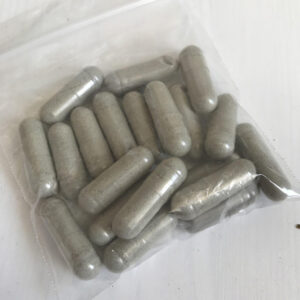

Reviews
There are no reviews yet.